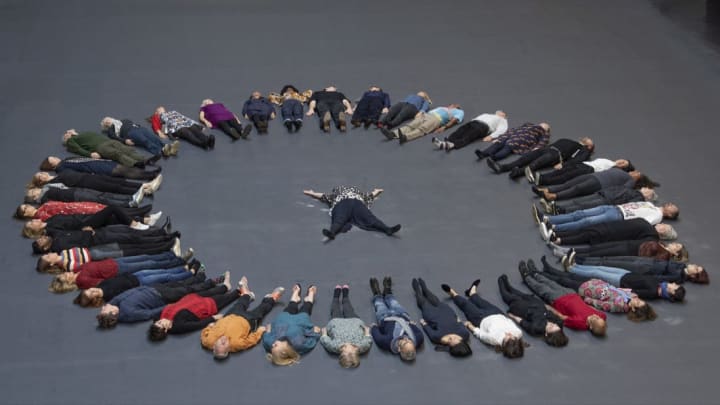Some art is so powerful that it can move you to tears. A new installation at London’s Tate Modern is virtually guaranteed to do so, regardless of how you feel about it. As part of a new work by Cuban artist Tania Bruguera, visitors to the Tate’s Turbine Hall will be exposed to a chemical compound designed to produce tears, according to the BBC.
The installation is part of a larger exhibition on the plight of refugees and migration, one that features an ever-changing name—in a press release, the gallery calls it 10,143,075,926, but the figure is always increasing. The number reflects how many migrants moved from one country to another last year, and how many migrants have died in transit thus far this year.
The tear-inducing aspect of the piece is confined to one room, deemed the “crying room.” Inside, an organic chemical compound is constantly being pumped into the air, creating an invisible cloud that’s guaranteed to bring tears to your eyes. The BBC's coverage likened the feeling to what you experience while cutting onions, and said it has a minty smell. (Strong concentrations of menthol can produce tears, which is why actors use it to help them cry on command.)

The artist calls it “forced empathy” and hopes that the physical sensation of tearing up will provoke an emotional response in the viewer, too, combating the apathy that 24/7 news coverage of the current European migration crisis can engender.
In another bid to create a sense of togetherness in the space, the black floor is heat-sensitive, and when enough visitors lie down to warm it up with their body heat, a portrait of a young Syrian refugee appears hidden underneath. In order to see the image, visitors have to work together.
There are other aspects of the exhibition designed to make people uncomfortable. Low frequency sounds—which some experts have connected to the feeling of being haunted—are pumped into the gallery to make visitors feel unsettled. It all adds up to a multi-sensory experience designed to impact you on both an emotional and a physical level.
[h/t BBC]
